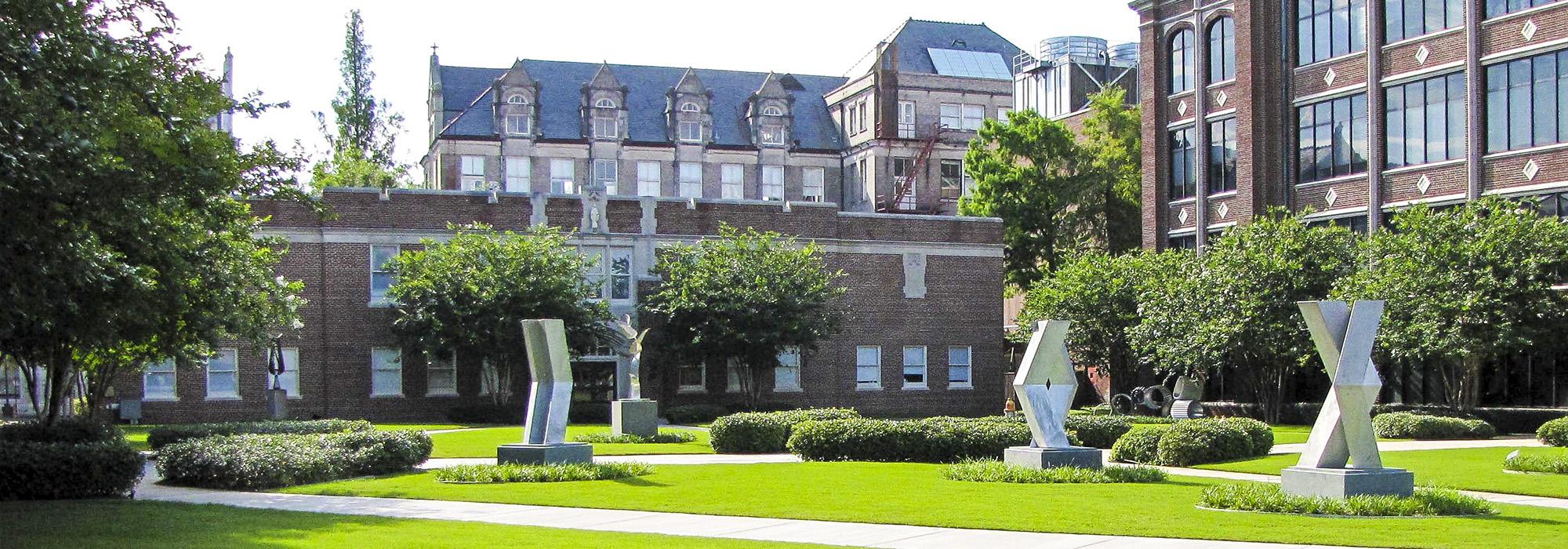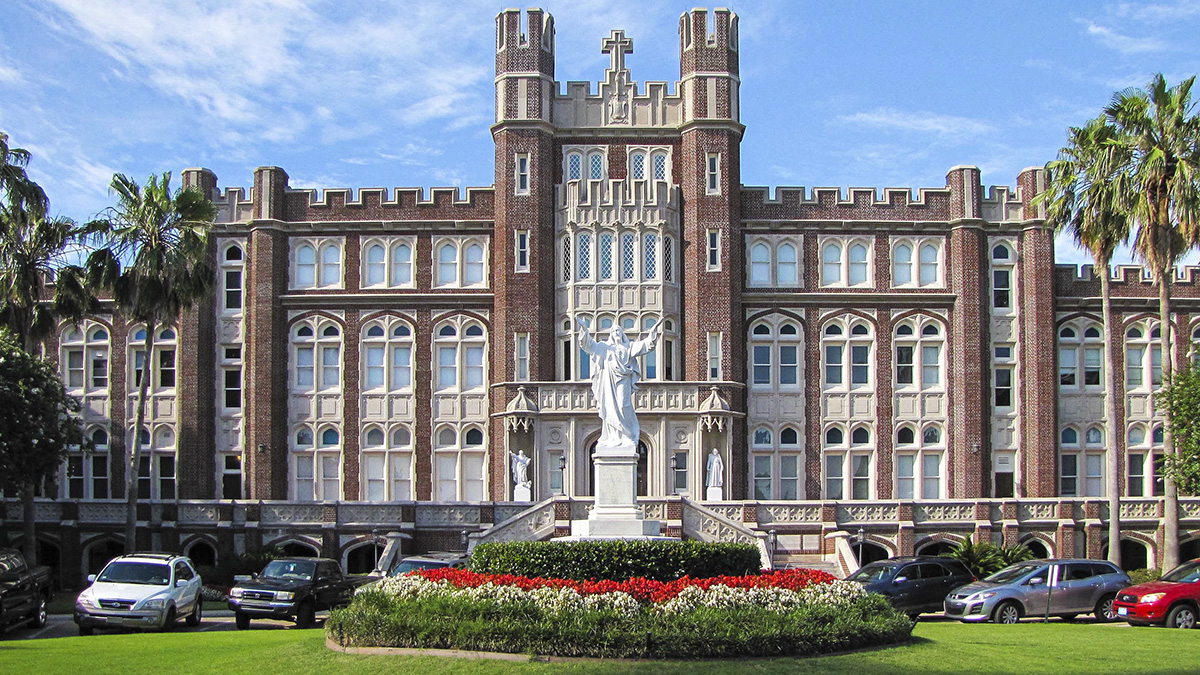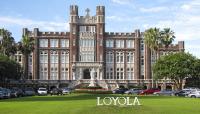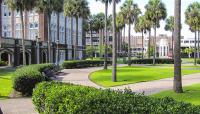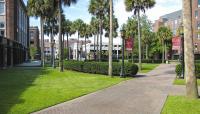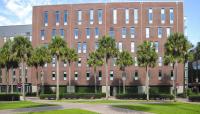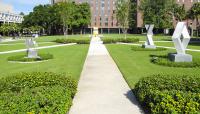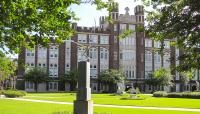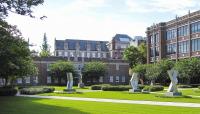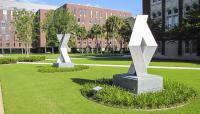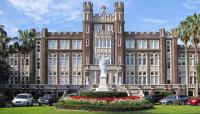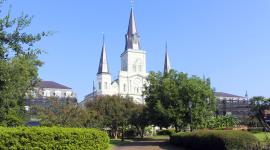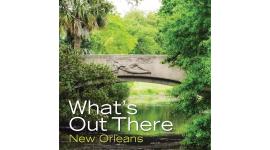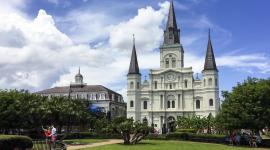Founded by the Jesuit Order in 1847 as the College of the Immaculate Conception, Loyola’s original campus was located at the corner of Baronne and Common streets. A new location was sought upriver in 1886, where development had recently been spurred by the 1884 World’s Fair. A tract of land was purchased directly across from the newly established Audubon Park. Formerly a part of the extensive Foucher Plantation, the parcel extended from St. Charles Avenue to the Claiborne Canal. Loyola College opened at this new uptown location in 1904, becoming Loyola University in 1911. In subsequent years, a significant portion of the site was sold, leaving a twenty-acre campus whose current boundaries extend from St. Charles Avenue to Freret Street, and from Calhoun Street to the adjacent Tulane University.
The earliest academic buildings were built in the Tudor-Gothic style and arranged around a large, U-shaped lawn looking south toward St. Charles Avenue and Audubon Park. Several other distinct quadrangles are contained within the rectilinear campus plan, each bordered by more recent academic buildings, which are juxtaposed with broad oaks, cypress, magnolias, and exotic palm trees. The Academic Quad features prominent geometric walkways with two inward-facing semicircular hedges at the western and southern boundaries whose paths meet in the center, which is surrounded by a round, clipped boxwood hedge. The Palm Court, adjacent to the Academic Quad, features four fan-shaped grassy spaces intersected by paved walkways and outlined by two concentric circles of palm trees. The Peace Quad, also known as the Plaza De Los Martires De La Paz, commemorates eight individuals murdered in 1989 in the El Salvadoran Civil War. In 1984, the University expanded with a 4.2-acre campus at St. Charles and Broadway, formerly occupied by St. Mary’s Dominican College.



